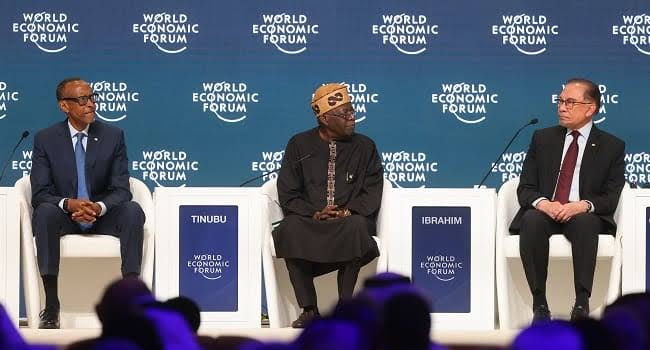National
The Beauty of Abaya: A Timeless Fashion Statement

The Beauty of Abaya: A Timeless Fashion Statement
The abaya is more than just a garment; it is a reflection of tradition, culture, and personal style. For centuries, the abaya has been worn by women in the Middle East as a symbol of modesty and elegance. Its timeless beauty continues to captivate people around the world, transcending cultural boundaries and becoming a global fashion phenomenon.
Understanding the Abaya: More Than Just a Garment.
When we think of the abaya, we often see it as a black flowing cloak that covers the entire body, but its significance goes far beyond its appearance. The abaya holds deep historical and cultural roots that are worth exploring.
The abaya, a traditional garment worn by women in the Middle East, has a rich history that spans centuries. It is not merely a piece of clothing, but a symbol of modesty, tradition, and cultural identity.
The Historical Significance of the Abaya
The history of the abaya dates back to ancient times when women would wear loose, flowing garments to preserve their modesty and protect themselves from the harsh desert climate. In the scorching heat of the Arabian Peninsula, the abaya provided much-needed shade and protection from the sun’s rays.
Over the centuries, the abaya evolved into the elegant and sophisticated garment we know today. During the Ottoman Empire, the abaya became a symbol of noble status and wealth. Embroidered with exquisite patterns and crafted from luxurious fabrics, it was worn by women of high social standing.
As time went on, the abaya became more than just a practical garment. It became a reflection of cultural values and traditions. Different regions developed their own unique styles of abayas, incorporating local fabrics, colors, and embellishments.
The Abaya in Modern Culture
Fast forward to the present day, the abaya has become an integral part of modern Arabian culture. It is worn by women of all ages and backgrounds, serving as a means of self-expression and identity. Many designers have taken inspiration from the abaya, incorporating it into contemporary fashion collections.
With its ever-growing popularity, the abaya has now captured the attention of fashion enthusiasts and designers worldwide. Its influence can be seen not only in the Middle East but also in Western fashion. Fashion shows and exhibitions dedicated to abayas have emerged, showcasing the creativity and diversity of this traditional garment.
Furthermore, the abaya has become a symbol of empowerment for many women. It allows them to embrace their cultural heritage while navigating the modern world. Women have found ways to personalize their abayas, adding unique touches and accessories to make them their own.
Moreover, the abaya has become a medium for artistic expression. Talented artists and designers have transformed the abaya into a canvas, using intricate embroidery, hand-painted motifs, and innovative designs to create wearable works of art.
As the abaya continues to evolve, it remains a powerful symbol of cultural identity and tradition. It serves as a reminder of the rich history and heritage of the Middle East, connecting generations and bridging the gap between the past and the present.
The Abaya as a Fashion Statement
The abaya has undergone a remarkable transformation over the years. Today, it comes in various styles, colors, and embellishments, catering to individual preferences and fashion trends.
But what exactly is an abaya? The abaya is a loose-fitting, full-length robe worn by women in many parts of the world, particularly in the Middle East. Traditionally, it was predominantly black and designed to conceal the body, reflecting cultural and religious norms. However, as fashion evolves, so does the abaya.
The Evolution of Abaya Styles
Traditionally, the abaya was predominantly black and loose-fitting, designed to conceal the body. However, contemporary abayas have become more diverse, incorporating different cuts, fabrics, and designs.
Imagine walking into a store and being greeted by a dazzling array of abayas in vibrant colors like royal blue, emerald green, and deep purple. These modern abayas are not only visually striking but also allow women to express their individuality and personal style.
From tailored abayas with intricate detailing to modern interpretations with unique silhouettes, the range of styles available has made the abaya a versatile fashion staple for women around the world. Whether it’s a flowy abaya with delicate lace accents or a sleek, structured abaya with metallic embellishments, there is something for everyone.
The Role of Designers in Abaya Fashion
Designers have played a crucial role in transforming the abaya into a fashion statement. With their creativity and innovation, they have elevated the abaya from a practical garment to a wearable work of art.
Many renowned designers have embraced the challenge of reinventing the abaya while respecting its cultural significance. They experiment with different fabrics, textures, and embellishments, pushing the boundaries of traditional design.
Picture a runway show where models strut down the catwalk in abayas that are anything but ordinary. These designer abayas feature intricate embroidery, beading, and sequins, creating a dazzling display of craftsmanship. Some designers even incorporate traditional Middle Eastern motifs into their designs, paying homage to the abaya’s roots.
Moreover, the influence of designers has extended beyond the runway. In recent years, collaborations between high-end fashion brands and abaya designers have emerged, bringing a touch of luxury to the abaya market. These collaborations have resulted in limited-edition abayas crafted from luxurious fabrics like silk and adorned with exquisite handcrafted details.
Thanks to the vision and creativity of designers, the abaya has become more than just a piece of clothing. It has become a symbol of cultural pride, a celebration of diversity, and a testament to the power of fashion to transcend boundaries.
Beyond its aesthetic appeal, the abaya carries deep symbolism and meaning, serving as a powerful cultural icon and a symbol of modesty.
The abaya, a flowing and loose-fitting garment, holds a significant place in the hearts and minds of those who wear it. It is not merely a piece of clothing, but a statement of identity and values. It represents the essence of modesty, reminding individuals of the importance of self-respect and dignity.
In a world where fashion often emphasizes revealing and body-hugging clothing, the abaya stands as a symbol of modesty and a shield against the pressures of societal norms. It allows women to present themselves with grace and elegance while maintaining their values.
For many women, wearing the abaya is a personal choice that reflects their beliefs and values. It empowers them to embrace their cultural heritage and express their individuality. Each abaya is unique, reflecting the personality and style of the wearer. From intricate embroidery to delicate embellishments, the abaya becomes a canvas for self-expression.
The Abaya as a Symbol of Modesty
The abaya’s significance as a symbol of modesty extends beyond its physical appearance. It serves as a constant reminder to individuals to embody humility and simplicity in their actions and interactions. It encourages them to prioritize inner beauty and character over outward appearances.
When donning an abaya, women often experience a sense of empowerment and liberation. It allows them to move freely without the constraints of societal expectations. The abaya becomes a shield, protecting them from objectification and allowing them to focus on their accomplishments and contributions.
Moreover, the abaya fosters a sense of unity among women who wear it. It creates a bond that transcends borders and cultures, connecting individuals through shared values and experiences. It is a symbol of solidarity, reminding women of their collective strength and resilience.
The Abaya as a Cultural Icon
Throughout history, the abaya has become synonymous with Arabian culture and identity. It represents the rich traditions, customs, and values of the region. Its origins can be traced back to ancient times, where it was worn as a practical garment to protect individuals from the harsh desert environment.
As Arabian culture spread across the globe, so did the recognition and admiration for the abaya. Influential figures and celebrities have been seen wearing abayas, showcasing the beauty and diversity of Arabian fashion. This global recognition has not only elevated the status of the abaya but also increased appreciation for the cultural heritage it represents.
Furthermore, the abaya has become a source of inspiration for designers worldwide. Its elegant silhouette and intricate details have influenced fashion trends, leading to the fusion of traditional and contemporary styles. The abaya has transcended its cultural boundaries, becoming a symbol of fashion innovation and creativity.
In conclusion, the abaya holds a profound significance that goes beyond its physical appearance. It represents modesty, cultural heritage, and individuality. It serves as a reminder to embrace one’s values and express oneself authentically. The abaya is not just a garment; it is a symbol of empowerment, unity, and timeless beauty.
The Global Influence of the Abaya
The reach of the abaya extends beyond its origins, as it has made a significant impact on the global fashion scene.
The Abaya in Western Fashion
With the rise of cultural appreciation and inclusivity, the abaya has found its place in Western fashion. Designers and fashion houses have embraced the abaya, incorporating its elements into their collections.
Celebrities and public figures from various backgrounds have also embraced the abaya, wearing it on red carpets and other prominent events. This cross-cultural appreciation has brought the beauty of the abaya to new audiences.
The Impact of the Abaya on Global Fashion Trends
The abaya’s influence goes beyond being a fashion statement; it has had a significant impact on global fashion trends. Its flowing silhouette, attention to detail, and emphasis on elegance have inspired designers worldwide.
We see elements of the abaya in mainstream fashion, such as long, flowing dresses and loose-fitting outerwear. The abaya’s timeless appeal has proven that modesty can be fashionable and that cultural heritage can shape the future of fashion.
The Future of the Abaya in Fashion
The abaya continues to evolve and adapt to the changing fashion landscape. Designers and fashion enthusiasts are pushing the boundaries of traditional design, exploring new possibilities and innovations.
Innovations and Trends in Abaya Design
Technology and advancements in the fashion industry have paved the way for new innovations in abaya design. From 3D printing to smart fabrics, designers are incorporating cutting-edge techniques to create unique and modern abayas.
Moreover, sustainability has become a key focus in fashion, and this trend is reflected in abaya design as well. Designers are exploring eco-friendly materials and ethical manufacturing processes, ensuring that the abaya remains relevant in a changing world.
The Abaya in the Digital Age
As technology continues to shape the way we interact with fashion, the abaya has found a place in the digital world. Online platforms and social media have allowed designers to showcase their creations to a global audience.
The accessibility of online shopping has made it easier for women worldwide to embrace the beauty of the abaya. They can explore different styles, colors, and designs, finding the perfect abaya that reflects their personal style and cultural heritage.
In conclusion, the abaya is more than just a fashion statement; it represents tradition, culture, and personal expression. From its historical roots to its global appeal, the abaya has captivated people around the world with its timeless beauty. As it continues to evolve and adapt, the abaya will undoubtedly remain a symbol of elegance and empowerment for generations to come.
The Beauty of Abaya: A Timeless Fashion Statement
National
Shettima departs for Nairobi for IDA21

Shettima departs for Nairobi for IDA21
Vice-President Kashim Shettima is expected to depart Abuja for Kenya to represent President Bola Tinubu at the crucial International Development Association (IDA21) Heads of State Summit in Nairobi on Monday.
Mr Stanley Nkwocha, the Senior Special Assistant to the President on Media and Communications, Office of The Vice-President, said this in a statement on Sunday in Abuja.
Nkwocha said the high-level gathering would be hosted by Kenyan President William Ruto.
He said that the event would see African leaders unite to call for an ambitious replenishment of the World Bank’s International Development Association (IDA) concessional lending arm.
“Shettima is expected to take a lead role in advocating for Nigeria’s vision of a transformative IDA21 financing package to accelerate development across the continent over the 2024-2026 period.
”In the draft Nairobi IDA Communique to be considered at the summit, African heads of state outline urgent priorities for IDA’s next three-year funding cycle, including building human capital, creating jobs, enhancing energy and digital access, building climate resilience, and promoting sustainable growth.
”While thanking donors for contributing 23.5 billion dollars to the current IDA20 cycle, the communique states that this level of financing is inadequate to meet the massive investment needs.
”It calls on IDA partners/donors to step up and ensure a robust replenishment for IDA21,” he said.
Nkwocha said Shettima was expected to emphasise that partners like IDA would be critical to realiing Nigeria’s economic transformation agenda.
”This is considering the country’s young population requiring substantial investments in sectors like job creation, energy access, and human capital development.
”The Nairobi summit follows previous IDA gatherings in Abidjan in 2022 and Dakar last year where African leaders united to call for an ambitious IDA20 replenishment from donors,” he said.
Shettima departs for Nairobi for IDA21
Economy
Fuel subsidy was removed for Nigeria not to go bankrupt – Tinubu

Fuel subsidy was removed for Nigeria not to go bankrupt – Tinubu
President Bola Tinubu has said that fuel subsidy was removed to save the country from going bankrupt.
Speaking as one of the panelists at the ongoing World Economic Forum in Riyadh, Saudi Arabia on Sunday, April 28, Tinubu said he was convinced it was in the best interest of the people.
He said; “For Nigeria, we are immensely consistent with belief that the economic collaboration and inclusiveness are necessary to engender stability in the rest of the world.
“Concerning the question of the subsidy removal, there is no doubt that it was a necessary action for my country not to go bankrupt, to reset the economy and pathway to growth.
“It is going to be difficult, but the hallmark of leadership is taking difficult decisions at the time it ought to be taken decisively. That was necessary for the country.
“Yes, there will be blowback, there is expectation that the difficulty in it will be felt by greater number of the people, but once I believe it is their interest that is the focus of the government, it is easier to manage and explain the difficulties.
“Along the line, there is a parallel arrangement to really cushion the effect of the subsidy removal on the vulnerable population of the country. We share the pain across board, we cannot but include those who are vulnerable.
“Luckily, we have a very vibrant youthful population interested in discoveries by themselves and they are highly ready for technology, good education committed to growth.
“We are able to manage that and partition the economic drawback and the fallout of subsidy removal.”
The President who stated that fuel subsidy removal engendered accountability, transparency and physical discipline for the country, also talked about exchange rate unification.
According to President Tinubu, the management of the nation’s currency by the government was as well necessary to allow the Naira compete favourably with other world currencies.
He said; “The currency management was necessary equally to remove the artificial elements of value in our currency. Let our local currency find its level and compete with the rest of the world currency and remove arbitrage, corruption and opaqueness.
“That we did at the same time. That is two engine problem in a very template situation for the government, but we are able to manage that turbulence because we are prepared for inclusivity in governance and rapid communication with the public to really see what is necessary and what you must do.”
Fuel subsidy was removed for Nigeria not to go bankrupt – Tinubu
National
Indomie clears air on price reduction in spite inflation

Indomie clears air on price reduction in spite inflation
Olawale Olayinka
The recent drop in the cost of indomie noodles is due to noticeable improvement in the country’s economy in recent times and not linked to reduced patronage, the producer of Indomie Instant Noodles, Dufil Prima Foods Ltd., has said.
Mr Temitope Ashiwaju, the company’s Group Corporate Communications and Event Manager, made the clarification in an interview with the News Agency of Nigeria (NAN) on Saturday in Lagos.
Ashiwaju said that the clarification became imperative to correct the wrong narrative about the reason for price adjustment for the product recently.
He said that the company was also affected by the economic realities, hence the reason for increase in prices of indomie noodles in the past.
“For a listening company such as ours, we felt at some point in time, against our operational cost to adjust when things started to improve.
“We had a price reduction, which is not one of those characters that is usually found with some other companies.
“Nigerians are quick to adjust prices when it is going up and favour them, but when prices go down, they are slow to do that. This is not our character at Indomie,” he said
According to him, many firms do not have such habits of changing prices in record time when it goes down.
He added: “We are not here to rip people’s out. Of course, if you starve people and make the products out of reach, it will also affect us.
“Our goal is to make the products affordable for Nigerians and at the best quality you can find around. Reduction in prices came when the operational cost started to go down.
“We don’t have a choice than to adjust to realities of times and other indices as they improve because serving people are at the centre of our core value.
“The moment we realised that things started to stabilise, we all hope and pray the economy gets better, as a responsible company, we felt it was time to do a further price reduction.”
According to him, some other companies would rather just either reduce qualities and start cutting corners when operational cost was up.
He said that instead of doing that Indomie opted for price jump to be in tune with what the reality is and that was what necessitated price increment in the first place.
He reiterated: “It was not about patronage at all. People must eat and this is uppermost in our heart as responsible company. It has nothing to do with low patronage at all
“We have been in the country for over two decades and have have factories and installations all scattered around the country.
“Over the years, we are all aware of the exchange rate dollars to the Naira and most of these are components of determining prices. Machines and mechanical operators are things that are not produced locally.
“All businesses are set up to make profits, however, for us, in trying to make best quality products at affordable prices for Nigeria.
“We have kept that perspective in the last 20 years which made us to have a brand that is known to people and competing with almost all food brands to rice.
“Apart from maybe rice, the only thing people talk about is indomie and noodles,” he said.
NAN recalls that the price of Indomie noodles skyrocketed within a short period and the demand reportedly reduced following price increase.
In a market survey conducted by NAN recently shows that a carton of Indomie standard pack which is the smallest size, was being sold for between N10,500 and N11,500.
However, a carton of that same size is presently sold for between N7,400 and N8,000.
Also, a carton of the Super Pack was sold for between N17,800 and N18,700, and a cartoon of Hungry Man size was sold for between N16,800 and N17,500.
Presently, a carton of the Super Pack is sold for between N12,000 and N13,000, while a carton of the Hungry Man size is sold for between N11,500 and N12,500.
Indomie clears air on price reduction in spite inflation
-

 Education10 months ago
Education10 months agoMathematics Teacher Reportedly Stung By Bee While Preparing Students For Exam
-

 Health3 days ago
Health3 days agoOnly 58,000 doctors renewed licence out of 130,000 registered doctors – MDCN
-

 Politics4 days ago
Politics4 days agoAPC IN A FIX AS GOVERNORSHIP ASPIRANTS REJECT THE ONDO STATE PRIMARY ELECTION RESULTS
-

 Sports2 days ago
Sports2 days agoAsaba to host Wheelchair Basketball Atlantic Conference League
-

 Defence & Security3 days ago
Defence & Security3 days agoMan begs I-G to assist in locating missing police wife
-

 Defence & Security6 days ago
Defence & Security6 days agoHow NSCDC Rescues 10 Suspected Victims of Human Trafficking in Abuja
-

 News3 days ago
News3 days agoSaudi govt. donates 50 tonnes of dates to FG
-

 News3 days ago
News3 days agoKiev evacuates 2 hospitals amid fears of possible Russian attack



Pingback: Insecurity: Kuje residents heave a sigh of relief with intensified military operations